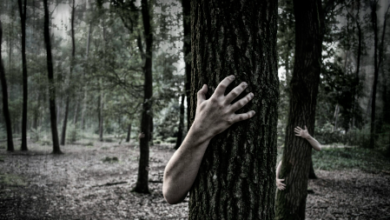Criminal Lawyer: The Evolution of the Criminal Lawyer Archetype in Television Dramas

The portrayal of a criminal lawyer in television dramas has undergone significant transformation over the years. From black-and-white morality tales to complex, morally ambiguous characters, TV shows have continuously reshaped how audiences perceive the legal profession. The evolution of the criminal lawyer archetype reflects shifting societal views on justice, ethics, and the law. In this article, we explore how TV dramas have depicted criminal lawyers across different eras and the impact these portrayals have had on public perception.
Early Television: The Idealistic Defender of Justice
In the 1950s and 1960s, legal dramas introduced criminal lawyers as noble, principled defenders of justice. These characters often embodied moral clarity, standing against corruption and ensuring that justice prevailed. Shows like Perry Mason (1957-1966) portrayed criminal lawyers as infallible figures who never lost a case. Perry Mason, played by Raymond Burr, was always one step ahead, unveiling the real culprit in dramatic courtroom revelations. His character reinforced the idea that criminal lawyers were the ultimate gatekeepers of truth and fairness.
The 1980s and 1990s: Realism and Ethical Dilemmas
As television evolved, so did the portrayal of criminal lawyers. The 1980s and 1990s saw the emergence of more realistic legal dramas that introduced ethical complexities. L.A. Law (1986-1994) revolutionized the genre by presenting lawyers as flawed yet relatable professionals navigating a competitive and morally ambiguous world. Characters like Michael Kuzak and Arnie Becker displayed both professional brilliance and personal struggles, showcasing the pressures that real-life lawyers face.
Another significant shift occurred with Law & Order (1990-2010), which provided a procedural approach to criminal law. While its primary focus was on law enforcement and prosecution, defense attorneys played crucial roles, sometimes appearing as antagonists and other times as defenders of due process. This era marked a move away from the idealized lawyer, introducing shades of gray into legal narratives.
The 2000s: The Rise of the Antihero Lawyer
By the early 2000s, audiences had grown more accustomed to morally complex protagonists, and criminal lawyers were no exception. Shows like The Practice (1997-2004) and Boston Legal (2004-2008) blurred the lines between right and wrong, presenting lawyers who bent the rules but ultimately fought for justice in unconventional ways.
However, one of the most defining portrayals of the criminal lawyer archetype came with Breaking Bad’s Better Call Saul (2015-present). Jimmy McGill, also known as Saul Goodman, exemplifies the morally ambiguous lawyer who straddles the line between legal and illegal practices. Unlike the noble defenders of early television, Saul uses loopholes and manipulative tactics to serve his clients, reflecting a darker, more cynical view of the legal profession.
The Modern Era: Diversity and Psychological Depth
In recent years, legal dramas have evolved to include a broader range of criminal lawyers, highlighting diversity and deeper psychological characterization. Shows like How to Get Away with Murder (2014-2020) introduced Annalise Keating, a brilliant yet deeply flawed criminal defense attorney played by Viola Davis. Annalise is both powerful and vulnerable, a stark contrast to the one-dimensional defenders of earlier decades. Her portrayal delves into personal trauma, systemic injustice, and the immense pressure that comes with defending the accused.
Similarly, Suits (2011-2019) redefined the legal drama with its fast-paced storytelling and focus on the interpersonal dynamics of lawyers. Harvey Specter, while not strictly a criminal lawyer, embodies the modern charismatic legal expert who plays by his own rules, further cementing the trend of confident, ethically flexible legal protagonists.
Impact on Public Perception
The evolution of criminal lawyers in television dramas has significantly shaped public perception of the legal profession. Early portrayals reinforced faith in the justice system, while modern depictions have introduced skepticism and intrigue. Shows like Better Call Saul and How to Get Away with Murder highlight the complexity of legal defense, making audiences question the true nature of justice.
Moreover, legal dramas have sparked interest in the field of criminal law, influencing aspiring lawyers and shedding light on the realities of the profession. However, they have also contributed to misconceptions—viewers often expect dramatic courtroom confessions or believe that legal maneuvering is as glamorous as depicted on screen.
Conclusion
From Perry Mason to Saul Goodman, the criminal lawyer archetype has undergone a dramatic transformation in television dramas. What began as an idealized vision of justice has evolved into a nuanced exploration of morality, ethics, and human nature. As storytelling continues to evolve, so too will the portrayal of criminal lawyers, reflecting the ever-changing landscape of law and society. Whether they are portrayed as champions of the innocent or cunning legal manipulators, one thing remains constant—criminal lawyers make for some of the most compelling characters on television.





